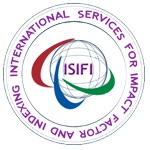Aspergillus flavus onychomycosis in the right fourth fingernail related to phalynx fracture and traumatic inoculation of plants: A vegetable vendor case report
Pdf : 18 Views Download
Citation: Merad Y, Moulay AA, Derrar H, Belkacemi M, Larbi-cherrak NA, Ramdani FZ, Belmokhtar Z, Messafeur A, Drici A, Ghomari O, and Adjmi-Hamoudi H, â€Aspergillus flavus onychomycosis in the right fourth fingernail related to phalynx fracture and traumatic inoculation of plants: A vegetable vendor case report, vol 2, no. 1, 2020, pp. 1-4.
Copyright Merad Y, et al . This is an open access article distributed under the Creative Commons Attribution License, which permits unrestricted use, distribution, and reproduction in any medium, provided the original work is properly cited.
Abstract:
Aspergillus genus is responsible of post-traumatic fungal infections like mycetomes and onychomycosis.A 30 year-old male vegetable vendor by occupation presented in our institution with brownish black discoloration of 1 year duration. On examination the right fourth fingernail was brownish black in color with loss of texture and dystrophic changes.Direct mycological analysis combined to inoculation of nail scraping on Sabouraud medium revealed Aspergillus flavus as causative agent of onychomycosis.Opportunistic fungi such Aspergillus flavus are not keratinolytic pathogens, they usually grow on damaged keratin, our patient reported previous finger fracture and sustained traumatic incoculation of plants. This case was managed by oral terbinafine administered 250 mg/day in addition to the local application of amorolfine 5% nail lacquer.To our best Knowledge this is the first report of onychomycosis secondary to both phalynx fracture and traumatic inoculation of plant.KEYWORDS: Aspergillus flavus, onychomycosis, superficial infection, nail trauma, phalynx fracture, vegetable vendor
Description:
INTRODUCTION
Aspergillus flavus has a worldwide distribution. This probably results from the production of numerous airborne conidies. It grows and thrives in hot and humid climates (1).Aspergillus flavus causes a broad spectrum of disease in humans, ranging from hypersensitivity reactions to invasive infections associated with angioinvasion. The most common clinical forms associated with Aspergillus flavus include chronic sinusitis, keratitis, cutaneous aspergillosis, wound infections and osteomyelitis following inoculation and trauma (1).Onychomycosis usually caused by dermatophytes and nondermatophytic mold and yeast, accounts for approximately 50% of ungueal diseases (2).The incidence rate of onychomycosis caused by Aspergillussp has been described as 2.6% to 6.1%, varying depending upon the reporter (3,4,5).onychomycosis affected toenails (59.1%) more often than fingernails (38.3%), probably due to toenails’ slow growth, which facilitates the invasion of the fungus and is perhaps supported by factors such as trauma and poor circulation (6).
Repeted trauma is a common cause of onychomycosis due to Aspergillus species (7,8,9).Opportunistic onychomycosis is seen more among individuals with occupational exposures such as vegetable vendors (8) and among babassu coconut breakers (7).In this case report, we descibe the clinical and mycological features of an onychomycosis due to Aspergillus flavus following fingernail fracture and traumatic inoculation of plants.Case reportA 30 year-old male vegetable vendor by occupation presented in our institution with brownish black discoloration of the right fourth fingernail of 1 year duration (figure 1), and history of traumatic fracture of the distal phalynx 2 years ago.
The patient sustained a penetrating plant injury to his finger while working, the area became infected. Physical examination, determined his general physical condition to be well with no specific findings other than an ungueal lesion. There were no lesions on his hands, feet, or toenails and past medical history and family history were unremarkable. Direct microscopic examination of nail scraping specimens showed the presence of dichotomous septate hyphae. Cultures were subsequently grown in 2 Sabouraud’s dextrose agar (SDA) slants without cycloheximide that were incubated at 25°C for one week. At day 5 large number of the same colonies were observed to grow rapidly in the 2 slants (figure 2).
Initially the growths appeared whitish but turned green and granular with time. There was no colony growth on SDA slants with cycloheximide.Microscopic characterization of the fungal isolate was carried out by preparing a lactophenol cotton blue mount from the growth, revealing Aspergillus flavus, hyphae were septate
and hyaline, conidiophores were rough and colorless, and phialide were biseriates (figure 3). Repeated culture of the nail samples yielded the same organism.Likewise, in our case, oral terbinafine was administered 250 mg/day in addition to the local application of amorolfine 5% nail lacquer.DiscussionThere are approximately more than 900 species in the complex Aspergillus which are common in the soil and decaying vegetation throughout the world, but are also found in all types of organic debris (9). Aspergillus flavus has a worldwide distribution. This probably results from the production of numerous airborne conidia, which easily disperse by air movements and possibly by insects (1), its a fast growing, filamentous and opportunistic fungi (10).Onychomycosis is a fungal infection of the nail, that is largely underdiagnosed in developing countries, it is caused by dermatophytes, yeasts and opportunistic non dermatophytic molds (NDM) (10).
The main risk factors of mycosis include warm, damp conditions, and trauma (11,12). The severity of the fungal infections depends on the type of injury (perforating, trauma, presence of foreign material), the body localisation and the general condition of the patient (13). Furthermore, mycetomes are known to be post-traumatic fungal infections, including Aspergillus as a etiological agent (13). Moreover, Aspergillus flavus has been already described as etiological agent of otomycosis induced by auricular trauma (12). Onychomycosis is more common in the immunocompressed and the elderly (5,14,11).
However, Aspergillus onychomycosis is seen more among individuals with occupational exposures such as vegetable vendors (8) and among babassu coconut breakers (7), which is consistent with our case report. Morevover, in kim and al. (9) case report, the patient had grown bean sprouts for a long period of time and thus her hands were regularly exposed to water. As such, her job is presumed to be closely related to the disease pathogenesis, which is in accordance with our findings. The regular exposure of vegetable vendors to geophilic fungi and phytopathogens like Aspergillus flavus predisposes them to fungal superficial mycosis.
The right sided infection could be promoted when handling contamined plants. Kim and al. (9) case involved women’s fingernails, while our case occurred in a man’s fingernails.In the recent literature, onychomycosis cases related to Aspergillus had no tinea pedis or tinea manus (15,9), which is consistent with our results.Fungal melanonychia is characterized by dark brown to black pigmentation of the nail, this discoloration is caused by the black conidia of Aspergillus in nail keratin (9), this coloration was suggesting onychomycosis in our case. Black pigment were obseved in the toenails and fingernails lesions of previous onychomycosis reports (9,15).
The most commonly described species of NDM are Scopulariopsis sp, Fusarium sp, Acremonium sp and Aspergi-illus sp. Repeated sample collection is required to prove opp- ortunistic onychomycosis. In the Aspergillus flavus species, phialides are both uniseriate (arranged in one row) and biser- iates. Conidia are typically globose to subglobose, and consp- icuously echinulate (1), these features were observed in our cultures.It is known that onychomycosis caused by non-dermatophytic mold does not respond well to common treatment (16), however, In Tosti and Piraccini’s cases, oral terbinafine was administered 250 mg a day for 3 months leading to a complete cure (15). The aim of this case report is to empasize on onychomycosis etiopathogenesis, with regard to physical exposure related to job task, especially manuals jobs like vegetable vendors.
Acknowledge:
We would like to thank all the « Hassani Abdelkader » hospital, department of dermatology staff
Conflicts of interest
None to disclose.
References
1.Hedayati, M.T.; A.C. Pasqualotto; P.A. Warn; P. Bowyer; D.W. Denning (2007). “Aspergillus flavus: human pathogen, allergen, and mycotoxin producerâ€. Microbiology. 153 (6): 1677–1692.
2.Verma S, Heffeman MP. Superficial fungal infection: dermatophytosis, onychomycosis, tinea nigra, piedra. In: Wolff K, Goldsmith LA, Katz SI, Gilchrest BA, Paller AS, Leffell DJ, editors. Fitzpatrick’s dermatology in general medicine. 7th ed. New York: McGraw-Hill; 2008. pp. 1807–1821.
3.Romano C, Gianni C, Difonzo EM. Retrospective study of onychomycosis in Italy: 1985-2000. Mycoses. 2005;48:42–44.
4.Gianni C, Cerri A, Crosti C. Non-dermatophytic onychomycosis. An understimated entity? A study of 51 cases. Mycoses. 2000;43:29–33.
5.Gupta M, Sharma NL, Kanga AK, Mahajan VK, Tegta GR. Onychomycosis: clinico-mycologic study of 130 patients from Himachal Pradesh, India. Indian J Dermatol Venereol Leprol. 2007;73:389–392.
6.Hay R. Literature review. Onychomycosis. J Eur Acad Dermatol Venereol. 2005;19 Suppl 1:1–7. doi: 10.1111/j.1468-3083.2005.01288.x.
7.Nascimento MDSB, Leitao VMS, Silva MACN, Maciel LB, Filho Muniz WE, Viana GMDC, et al. Eco-epidemiologic study of emerging fungi related to the work of babacu coconut breakers in the State of Maranhao, Brazil. Rev Soc Bras Med Trop. 2014;47:74–8.
8.Banu A, Anand M, Eswari L. A rare case of onychomycosis in all 10 fingers of an immunocompetent patient. Indian Dermatol Online J. 2013 Oct-Dec ;4(4) :302-304.
9.Kim DM, Suh MK, Ha GY, Sohng SH. Fingernail Onychomycosis Due to Aspergillus niger. Ann Dermatol. 2012 Nov; 24(4): 459–463.
10.Martinez-Herrera EO, Arroyo-Camarena S, Tejada-Garcia DL, Porras-Lopez CF, Arenas R. Onychomycosis due to opportunistic molds. An Bras Dermatol. 2015 May-Jun ;90(3) :334-337.
11.Papini M, Pirraccini BM, Difonzo E, Brunoro A. Epidemiology of onychomycosis in Italy : Prevalence data and risk factor identification. Mycoses. 2015 ;58(11) :659-664.
12.Merad Y, Adjmi-Hamoudi H. Self-injury in Schizophrenia as predisposing factor for otomycosis. Med Mycol Case Rep. 2018 Sep; 21: 52-53.
13.Obradovic A, Hajdu S, Presterl E. Invasive mycoses and trauma. Wien Med Wochenschr. 2007.
14.Merad Y. Lansari T, Belkacemi M, Benlazar F, Tabet-Derraz N, Hebri ST, Adjmi-Hamoudi H. Tinea unguium, tinea cruris and tinea corporis caused by Trichophyton rubrum in HIV patient : A case report. J Clin Cases Rep 4(4):86-92.
15.Tosti A, Piraccini BM. Proximal subungual onyonychomycosis due to Aspergillus niger: report of two cases. Br J Dermatol. 1998;139:156–157.
16.Nolting S, Brautigam M, Weidinger G. Terbinafine in onychomycosis with involvement by non-dermatophytic fungi. Br J Dermatol. 1994;130(Suppl 43):16–21.



















